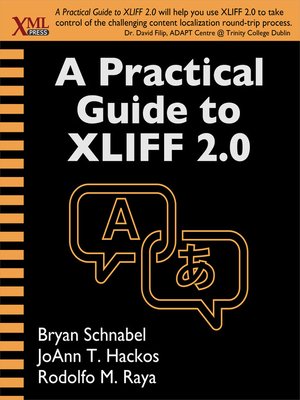
Sign up to save your library
With an OverDrive account, you can save your favorite libraries for at-a-glance information about availability. Find out more about OverDrive accounts.
Find this title in Libby, the library reading app by OverDrive.



Search for a digital library with this title
Title found at these libraries:
| Library Name | Distance |
|---|---|
| Loading... |
A Practical Guide to XLIFF 2.0 introduces the OASIS XLIFF standard. Companies use XLIFF to standardize the exchange of source and localized content with localization and translation vendors.
You will learn how to get the most from the XLIFF standard, use best practices in your translation workflow, extend XLIFF, and use the XLIFF modules.
This book is for localization coordinators, technical writers, content management system vendors, localization service providers, and consultants who want to incorporate XLIFF into their customers' publishing workflow.
Getting Started introduces XLIFF, the translation process, and the major parts of XLIFF, including the core and modules.
Applied XLIFF describes how XLIFF supports translation of XML (including DITA), websites, office documents, graphics, and software user interfaces.
XLIFF Core: introduces the XLIFF core features, including:
XLIFF Modules: introduces the XLIFF modules, including:
XLIFF 2.0 Structure: describes the XLIFF 2.0 schemas, including the core structural and inline elements and module schemas.
Examples: detailed examples, including XSL code, for transforming XML source files into and out of XLIFF.







